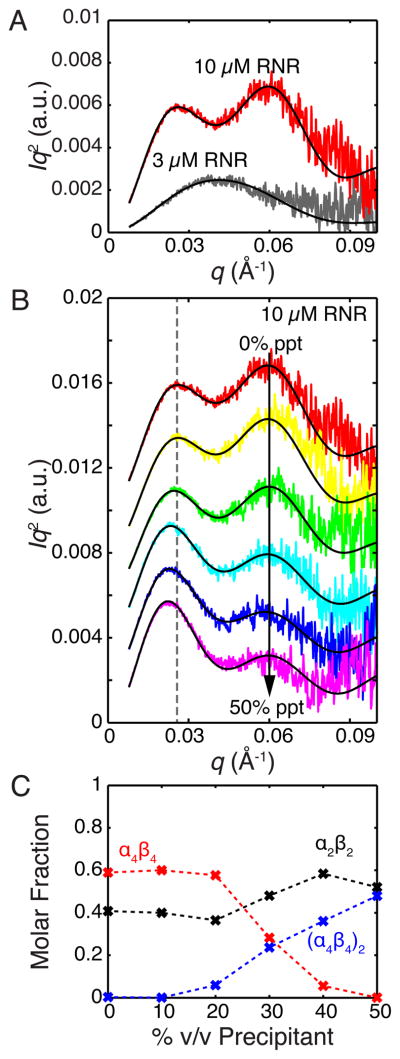Figure 4.
SAXS studies on F2CDP-treated E. coli RNR reveal conditions important for oligomeric state changes. (A) The Kratky plots of 3 μM (dark grey) and 10 μM (red) F2CDP- treated E. coli RNR. The presence of one large peak at 3 μM RNR indicates a globular species, such as α2β2, while the presence of two peaks at 10 μM RNR indicates a non-globular species, such as the α4β4-ring. A two-component fit to the data (black line) indicates that the solution at 3 μM RNR is 94% α2β2 and 6% α4β4, while the solution at 10 μM RNR is 43% α2β2 and 57% α4β4. (B) The Kratky representation of 10 μM F2CDP-treated RNR over the course of a titration with 0–50% v/v crystallization precipitant indicates a shift from a less globular species, such as a α4β4-ring, to a more globular species, such as (α4β4)2 The movement of the first peak from the dotted line to lower q is consistent with an increase in overall radius of gyration. A three-component fit to the data (black curves) yields (C) the fractions of α2β2, α4β4, and (α4β4)2 species present at the indicated percentages of precipitant. Data suggest that precipitant favors the formation of (α4β4)2 from α4β4.

